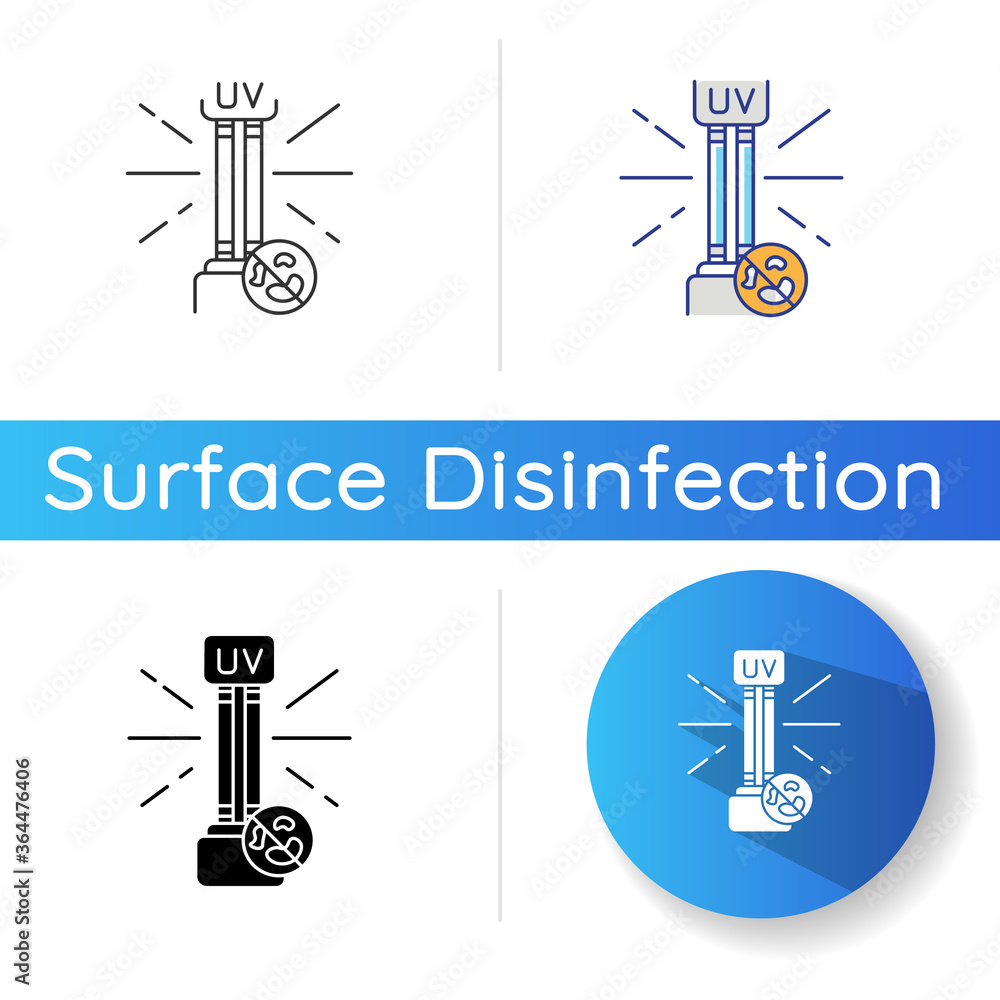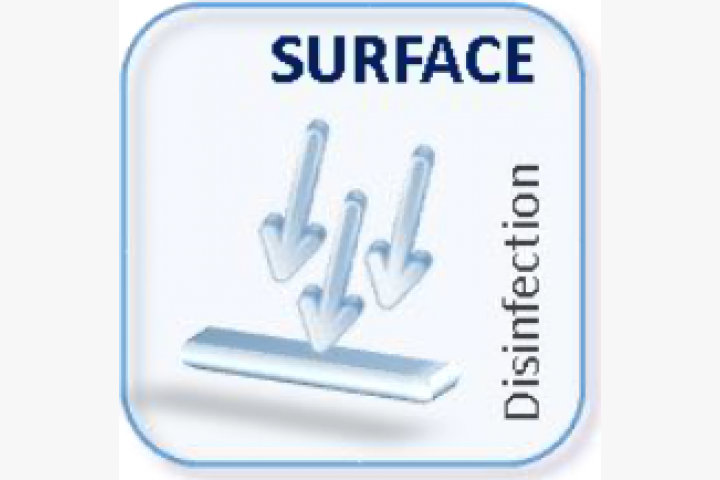Elevate Your Cleanliness Specifications with Advanced UV Surface Disinfection Modern Technology
Wiki Article
UV Sanitation: The Cutting-Edge Technology Changing Cleanliness Practices
In the world of sanitation techniques, one modern technology has emerged as a game-changer: UV disinfection. From healthcare settings to food processing, UV sanitation is making its mark in different industries.How UV Disinfection Works
UV disinfection functions by utilizing ultraviolet light to ruin or suspend microbes, supplying a extremely reliable and chemical-free method of cleanliness. This modern technology takes advantage of the power of short-wavelength UV-C light, which is qualified of damaging the DNA and RNA of microorganisms, thus providing them incapable to cause and reproduce injury.The procedure begins with the installment of UV disinfection systems, which contain UV lights that release UV-C light. These lamps are strategically positioned in locations where microbial contamination is an issue, such as water treatment plants, medical facilities, labs, and food handling facilities.
When microbes are exposed to UV-C light, the photons permeate their cell wall surfaces and reach the DNA and RNA within. The high-energy UV-C photons interrupt the hereditary material by developing bonds in between surrounding nucleotides, leading to the development of thymine dimers. These dimers avoid the microbes from reproducing, making them safe.
UV sanitation is very reliable versus a large range of bacteria, including bloodsuckers, germs, and infections. It is particularly efficient against waterborne microorganisms like E. coli, Giardia, and Cryptosporidium. UV disinfection is a chemical-free method, eliminating the requirement for potentially harmful disinfectants and minimizing the risk of dangerous disinfection by-products.
Benefits of UV Sanitation
UV sanitation supplies various advantages in the area of cleanliness, making it an extremely chosen technique for successfully eliminating damaging bacteria. One of the key advantages of UV disinfection is its capacity to give a chemical-free option. Unlike standard disinfection methods that depend on chemicals, UV sanitation makes use of ultraviolet light to ruin the DNA of bacteria, rendering them incapable to reproduce and trigger infections. This not just eliminates the requirement for potentially harmful chemicals yet additionally minimizes the danger of chemical residue on surface areas.
UV sanitation is likewise highly versatile in its applications. It can be used in numerous settings, including hospitals, institutions, food processing facilities, and water treatment plants. UV disinfection systems can be easily integrated into existing sanitation techniques, supplying an additional layer of protection against infectious diseases.
Along with its efficiency and adaptability, UV sanitation is likewise eco-friendly. It does not generate any harmful results or residues, making it a secure and lasting method for hygiene - uv surface disinfection. UV sanitation calls for marginal upkeep and has a lengthy lifespan, resulting in cost savings in the lengthy run.
UV Sanitation in Healthcare Settings
In medical care setups, UV sanitation has emerged as an innovative method for successfully eliminating damaging microorganisms. UV sanitation works by giving off ultraviolet light at a specific wavelength that is lethal to microorganisms, infections, and various other microbes.Firstly, UV sanitation is a non-chemical technique, making it an eco-friendly option contrasted to traditional sanitation approaches that frequently include the use of extreme chemicals. Making use of UV light gets rid of the demand for chemical anti-bacterials, decreasing the danger of unsafe residue or chemical exposure to both clients and health care employees.
In addition, UV disinfection is extremely effective in killing a variety of microbes, including drug-resistant microorganisms such as MRSA and C. difficile. It provides a dependable and regular disinfection process, making certain that all surfaces and devices are thoroughly decontaminated, also in hard-to-reach locations.

UV Disinfection in Food Handling
The application of UV sanitation prolongs past medical care settings and finds considerable value in the world of food processing. uv surface disinfection. UV disinfection innovation is ending up being increasingly popular in the food sector as a result of its capacity to see here now successfully remove harmful pathogens and enhance food securityOne of the major advantages of UV disinfection in food handling is its ability to target a variety of bacteria, consisting of infections, microorganisms, and mold and mildews. By utilizing UV light at certain wavelengths, it is feasible to interfere with the DNA and RNA of these virus, providing them incapable to reproduce or cause injury. This modern technology can be applied to various stages of the food processing chain, consisting of surface sanitation, equipment sanitation, and water therapy.
UV sanitation gives a chemical-free and non-thermal method of sterilizing food. Unlike typical sanitation methods that count on chemicals or warmth, UV innovation does not leave any residue or modify the taste, texture, or nutritional value of the food. navigate to this website This makes it an excellent service for industries that require rigorous adherence to high quality criteria.
Moreover, UV sanitation systems are simple to operate and install, requiring very little maintenance. They can be integrated right into existing handling lines without triggering substantial interruptions to the manufacturing procedure. Additionally, UV systems have a fast treatment time, permitting continual handling and minimizing downtime.
The Future of UV Sanitation

One location where UV disinfection is anticipated to make substantial advancements is in the area of medical care. With the surge of antibiotic-resistant microorganisms and the demand for more reliable disinfection techniques, UV light has the prospective to play a vital duty in reducing healthcare-associated infections. UV sanitation systems can be utilized to decontaminate surfaces, tools, and also the air in health care facilities, helping to avoid the spread of hazardous pathogens and boost patient safety and security.
One more market that can profit from developments in UV disinfection modern technology is the food sector. UV light has actually currently proven to be an efficient approach for sanitizing food and lowering the danger of foodborne ailments. As modern technology enhances, we can expect to see much more economical and effective UV disinfection systems being executed in food processing plants, making sure that the food we eat is safe and cost-free from dangerous microorganisms.
Final Thought
In verdict, UV disinfection is an innovative technology that is transforming hygiene techniques in healthcare settings and food processing. By using UV light to kill or deactivate microbes, it offers many advantages such as effectiveness, safety and security, and performance. With ongoing developments in this field, UV disinfection holds terrific possible for the future of cleanliness, supplying a reputable and lasting remedy for keeping clean and sanitary settings.UV disinfection is a chemical-free method, removing the requirement for potentially dangerous anti-bacterials and decreasing the danger of dangerous sanitation spin-offs.
Unlike conventional disinfection approaches that rely on chemicals, UV sanitation uses ultraviolet light to destroy the DNA of microbes, rendering them unable to recreate and cause infections. Unlike traditional sanitation techniques that depend Discover More on chemicals or warmth, UV modern technology does not leave any type of deposit or alter the taste, structure, or dietary value of the food. As technology enhances, we can expect to see extra economical and efficient UV disinfection systems being executed in food processing plants, making sure that the food we take in is safe and cost-free from harmful bacteria.
In final thought, UV sanitation is a cutting-edge modern technology that is changing cleanliness methods in health care setups and food handling.
Report this wiki page